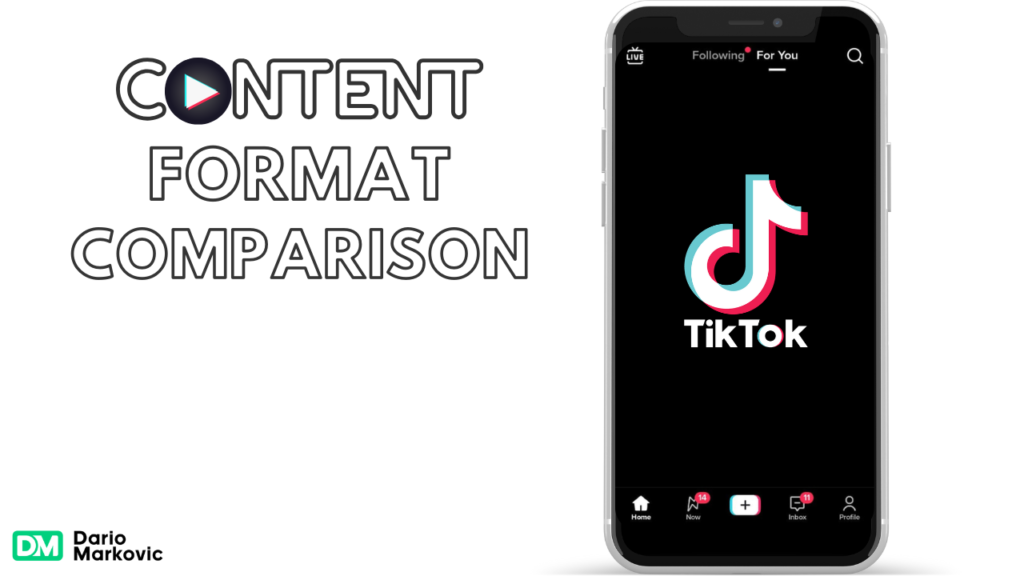Instagram Reels vs TikTok ecommerce have become powerful social media platforms for online stores, each with its own features designed to connect with their specific audiences.
- Instagram Reels: A part of Instagram dedicated to short form video content, appealing to users who prefer polished and visually curated content.
- TikTok: Known for its raw and unfiltered tiktok videos, this platform attracts a younger user base audience seeking genuine content.
Choosing the right platform is essential for increasing brand visibility and engagement.
In this article, we will explore important comparisons between Instagram Reels and TikTok, including:
- Audience demographics
- Content formats
- Engagement metrics
- Advertising features
- Content strategies
- Influencer marketing dynamics
This analysis will help you make informed decisions that align with your e-commerce business goals.
1. Audience Analysis
When exploring user demographics, TikTok emerges as a dominant video content platform for engaging Generation Z and Millennials.
With over 1 billion monthly users, brands like Gymshark and Duolingo have effectively tapped into this younger audience. Gymshark’s viral challenges and Duolingo’s humorous short form video content resonate well with the playful nature of TikTok users, driving significant engagement.
On the other hand, Instagram Reels caters to a slightly older demographic, appealing to users aged 25-34. With around 2 billion active users, brands such as Nike and Glossier utilize Reels to showcase their products in a polished manner. Nike’s visually stunning campaigns highlight athleticism, while Glossier’s aesthetic aligns seamlessly with Instagram’s curated feel.
For brands deciding between short form videos platforms, understanding the target audience is crucial.
Key considerations include:
- Age Group: Younger audiences lean towards TikTok engaging videos; older consumers favor Instagram.
- Content Style: Authentic, relatable engaging content works best on TikTok while polished visuals thrive on Instagram.
- Engagement Goals: Determine whether your strategy aims for high engagement or brand aesthetics.
Choosing wisely ensures the right message reaches the intended audience effectively.
2. Content Format Comparison
TikTok Video Format Characteristics
- Video Length: Ranges from 15 seconds to 10 minutes. This flexibility allows brands to experiment with both quick, catchy trending content and more detailed storytelling.
- Content Style: Known for its raw and unfiltered aesthetic, TikTok encourages authenticity. Users appreciate behind-the-scenes glimpses and relatable short form video content, which often leads to higher engagement levels.

Examples of successful TikTok short form content include brands like Chipotle, which launched the #GuacDance challenge, tapping into user-generated content that felt genuine and fun.
Instagram Reels Video Format Details
- Video Length: Limited to a maximum of 60 seconds, which promotes concise messaging.
- Content Style: Typically more aesthetic and polished, Instagram Reels capitalizes on high-quality visuals. Brands like Nike utilize stunning cinematography to create a seamless blend with their existing feed.
Visually appealing Reels can dramatically enhance brand perception, making products feel aspirational and desirable.
Influence on Engagement Levels
The differences in social media videos formats significantly impact viewer engagement.
TikTok’s longer videos cater to users seeking entertainment or education, while Instagram Reels’ succinct approach fosters quick interactions. Brands must align their content style with platform expectations to capture audience interest effectively.
3. Engagement Metrics Analysis
Engagement metrics are crucial in determining how well high quality content connects with users.
Let’s take a closer look at how TikTok and Instagram Reels compare in this aspect.
1. Average Engagement Rates
- TikTok has an impressive engagement rate of 6.72% for ads, showcasing its ability to capture and hold viewer attention. For example, a campaign by Gymshark effectively used TikTok to engage fitness enthusiasts, driving significant traffic to their online store.
- On the other hand, Instagram Reels has an average engagement rate of 1.95% for ads. A notable example is Glossier, which successfully incorporated Reels into their marketing strategy, featuring product demonstrations that resonated with their audience.
2. Cost Efficiency
- Cost-per-click (CPC) on TikTok often results in lower overall costs for brands aiming to maximize reach and engagement. Advertisers can take advantage of the platform’s large user base while keeping their budgets flexible.
- Instagram Reels follows a cost-per-thousand impressions (CPM) model, which can lead to better cost efficiency over time, particularly for brands prioritizing brand visibility and impressions.
When comparing Instagram Reels vs TikTok for e-commerce, it’s important to consider these metrics alongside your specific marketing objectives in order to select the most effective platform for your brand’s requirements.
For a more comprehensive understanding, refer to these social media metrics that are essential to track and analyze, as well as the detailed insights about various social media metrics that can help inform your strategy.
4. Advertising Features and Strategies
TikTok Advertising Formats
TikTok provides unique advertising features that can significantly boost brand visibility:
- In-Feed Ads: These ads appear in users’ feeds, blending seamlessly with organic content. They allow for a variety of calls-to-action, such as website visits or app downloads.
- Branded Hashtag Challenges: Brands can create challenges encouraging users to participate and generate content around a specific theme. This can lead to viral trends, amplifying engagement.
Tips for effective TikTok ad campaigns:
- Leverage trending audio sounds and visuals to capture audience attention.
- Ensure authenticity; users resonate more with relatable ads rather than polished commercials.
Instagram Reels Advertising Integration
Instagram Reels ads integrate smoothly into the broader Instagram ecosystem. They appear in the Reels tab but can also be displayed within Stories and feed posts. This integration enhances visibility across different formats.
Rich Targeting Options: Brands can utilize detailed targeting options based on user behavior, interests, and demographics. This allows for precision in reaching the desired audience effectively.
Content strategies for Instagram Reels:
- Focus on high-quality visuals that align with the aesthetic of users’ feeds.
- Use storytelling techniques to engage viewers while promoting products subtly.
5. Content Strategy for E-commerce Marketing Success
Creating visually appealing content content that resonates is crucial for e-commerce success on both TikTok and Instagram Reels.
TikTok Strategies
- High-Volume Production: Brands like Gymshark capitalize on producing a substantial amount of content. They regularly share workout vertical videos and fitness challenges that engage users.
- Authenticity: The platform thrives on genuine interactions. Duolingo effectively utilizes humorous, relatable content to connect with its audience, often showcasing real users’ experiences with the language-learning app.
- Trending Challenges: Leveraging popular sounds or challenges can significantly boost visibility. Brands that join in on these trends often see increased engagement.
Instagram Reels Strategies
- High-Quality Visuals: Brands such as Nike focus on creating aesthetically pleasing content. Their Reels showcase polished visuals that seamlessly integrate into users’ feeds, enhancing brand perception.
- User-Generated Content: Encouraging customers to share their experiences fosters community and authenticity. Glossier effectively utilizes this strategy by reposting customer testimonials and makeup tutorials, making their audience feel valued.

Both platforms require distinct strategies, yet the goal remains the same: to captivate audiences and drive engagement through innovative video content approaches.
6. Influencer Marketing Dynamics in E-commerce Marketing Campaigns
Influencer partnerships play a critical role in e-commerce marketing on both Instagram Reels and TikTok.
Each platform has its own unique style that brands can use to connect with their target audiences.
Casual vs. Polished Content
TikTok Influencers:
- Focus on authenticity and relatability.
- Content is often spontaneous and less scripted, which resonates well with users seeking genuine engagement.
- Example: Brands like Gymshark utilize casual collaborations with fitness influencers who share unfiltered workout routines, making the products feel more accessible.
Instagram Influencers:
- Known for their aesthetically pleasing and curated visuals.
- Content is typically polished, highlighting products in lifestyle settings.
- Example: Nike collaborates with influencers who create visually stunning Reels showcasing athletic wear in scenic environments, aligning the brand with aspirations of fitness and style.
The choice between influencer styles may depend on the brand’s image and target audience preferences. Casual short form video content on TikTok can drive engagement through relatable storytelling, while polished content creation on Instagram can elevate brand perception and desirability.
Brands should assess their goals and audience expectations when deciding on influencer branded content partnerships across these platforms.
Dario’s Conclusion about Instagram Reels vs TikTok Ecommerce
Selecting the best social media platform for your e-commerce marketing hinges on strategic decision-making that aligns with your brand’s goals.
Each platform offers unique strengths:
- Instagram Reels: Ideal for brands targeting a slightly older demographic, focusing on high-quality visuals and integration with existing Instagram content.
- TikTok: Perfect for engaging younger audiences through authentic, relatable content that thrives on trends and challenges.
To craft a comprehensive e-commerce marketing strategy, consider utilizing both platforms.
This approach allows you to:
- Maximize reach across diverse audiences
- Tailor content to suit each platform’s unique environment
- Enhance brand visibility and engagement
A well-rounded strategy that leverages the distinct advantages of Instagram Reels vs TikTok will drive effective results in achieving your e-commerce goals.
Frequently Asked Questions
What are the main differences between Instagram Reels and TikTok for e-commerce marketing?
Instagram Reels and TikTok differ in audience demographics, content formats, engagement metrics, advertising features, and influencer marketing dynamics. TikTok primarily attracts a younger audience (Gen Z and Millennials), while Instagram Reels tends to engage a slightly older demographic.
Content on TikTok is often raw and unfiltered, whereas Instagram Reels emphasizes polished visuals.
Which platform has higher engagement rates for e-commerce ads?
TikTok boasts an average engagement rate of 6.72% for ads, significantly higher than Instagram Reels’ rate of 1.95%. This indicates that brands may achieve better interaction with their audience on TikTok through their advertising efforts.
How do content formats differ between Instagram Reels and TikTok?
TikTok allows video lengths ranging from 15 seconds to 10 minutes and focuses on a raw, unfiltered style. In contrast, Instagram Reels has a maximum video length of up to 60 seconds and promotes a more aesthetic and polished content style. These differences can influence viewer engagement levels and brand perception.
What advertising features are unique to each platform?
TikTok offers unique advertising formats such as In-Feed Ads and Branded Hashtag Challenges, which encourage user participation. On the other hand, Instagram Reels integrates ads within the broader Instagram ecosystem, providing rich targeting options based on user behavior.
What content strategies work best for e-commerce marketing on these platforms?
Successful TikTok strategies focus on high-volume production, authenticity, and leveraging trending challenges or sounds. Brands like Gymshark exemplify this approach. For Instagram Reels, high-quality visuals that blend seamlessly into users’ feeds are key; brands like Nike or Glossier showcase effective use of this strategy.



